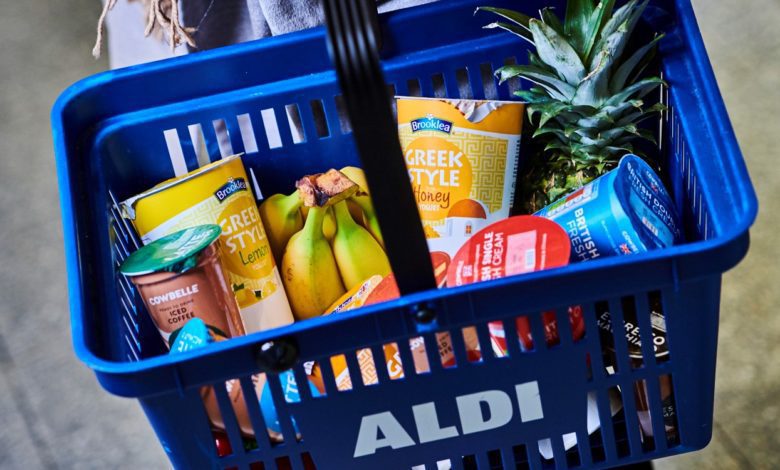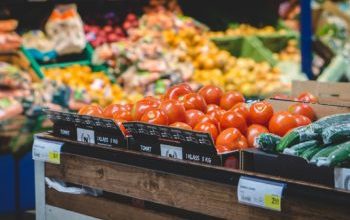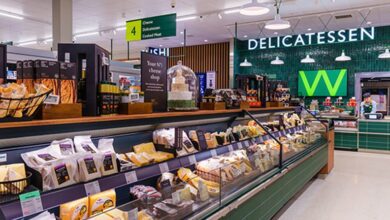Grocery price inflation dips as Aldi secures 10% market share
Overall, take home grocery sales grew by 8.1% over the month to mid-April

Register to get 1 free article
Reveal the article below by registering for our email newsletter.
Want unlimited access? View Plans
Already have an account? Sign in
Grocery price inflation rose by 17.3% in the four weeks to 16 April 2023, down marginally on the 17.5% recorded in the previous four weeks, according to the latest data from Kantar.
Amid rising prices, both Aldi and Lidl hit new record market shares over the latest 12 week period at 10.1% and 7.6% respectively. Lidl was the fastest growing grocer with sales increasing by 25.1%, while Aldi is just behind on 25.0%.
Meanwhile, the three largest grocers continued to grow at similar rates in the 12 weeks to 16 April 2023. Asda led the pack with sales up 8.8% year on year, giving the retailer a 14.0% share of the market. Tesco and Sainsbury’s also saw their sales increasing by 8.0% and 8.7%, claiming 27.0% and 14.9% of the sector, respectively.
Morrisons’ sales continued to increase, and it now holds an 8.7% share of the market. Co-op’s market share stands at 5.7%, with sales growing by 2.7% in the latest 12 weeks.
Waitrose’s sales increased by 3.2%, its best performance since June 2021, pushing its market share to 4.5%.
Finally, Iceland matched the 12-week market growth rate of 9.4%, maintaining its level of share at 2.2%. Ocado outpaced the overall online market, increasing sales by 8.7%.
Overall, take home grocery sales grew by 8.1% over the month to mid-April.
Fraser McKevitt, head of retail and consumer insight at Kantar, said: “The latest drop in grocery price inflation will be welcome news for shoppers but it’s too early to call the top. We’ve been here before when the rate fell at the end of 2022, only for it to rise again over the first quarter of this year.
“We think grocery inflation will come down soon, but that’s because we’ll start to measure it against the high rates seen last year. It’s important to remember, of course, that falling grocery inflation doesn’t mean lower prices, it just means prices aren’t increasing as quickly.”
He added: “Own label lines, which are often cheaper, are still growing at 13.5% this period suggesting shoppers are finding better value for money on these shelves. The very cheapest value own label lines are doing even better, with sales soaring by 46% versus a year ago. These products now find their way into nearly one in five baskets. Branded sales are going up but more slowly at 4.4%.
“Consumers are continuing to shop around, visiting at least three major retailers every month on average. The discounters have been big beneficiaries of this, with Aldi going past a 10% market share for the first time this month. That’s up from 5% eight years ago in 2015, so we can see just how competitive the market can be. Retailers are really battling it out to show value to shoppers, but if consumers feel their offer isn’t quite right then they’ll go elsewhere.”







